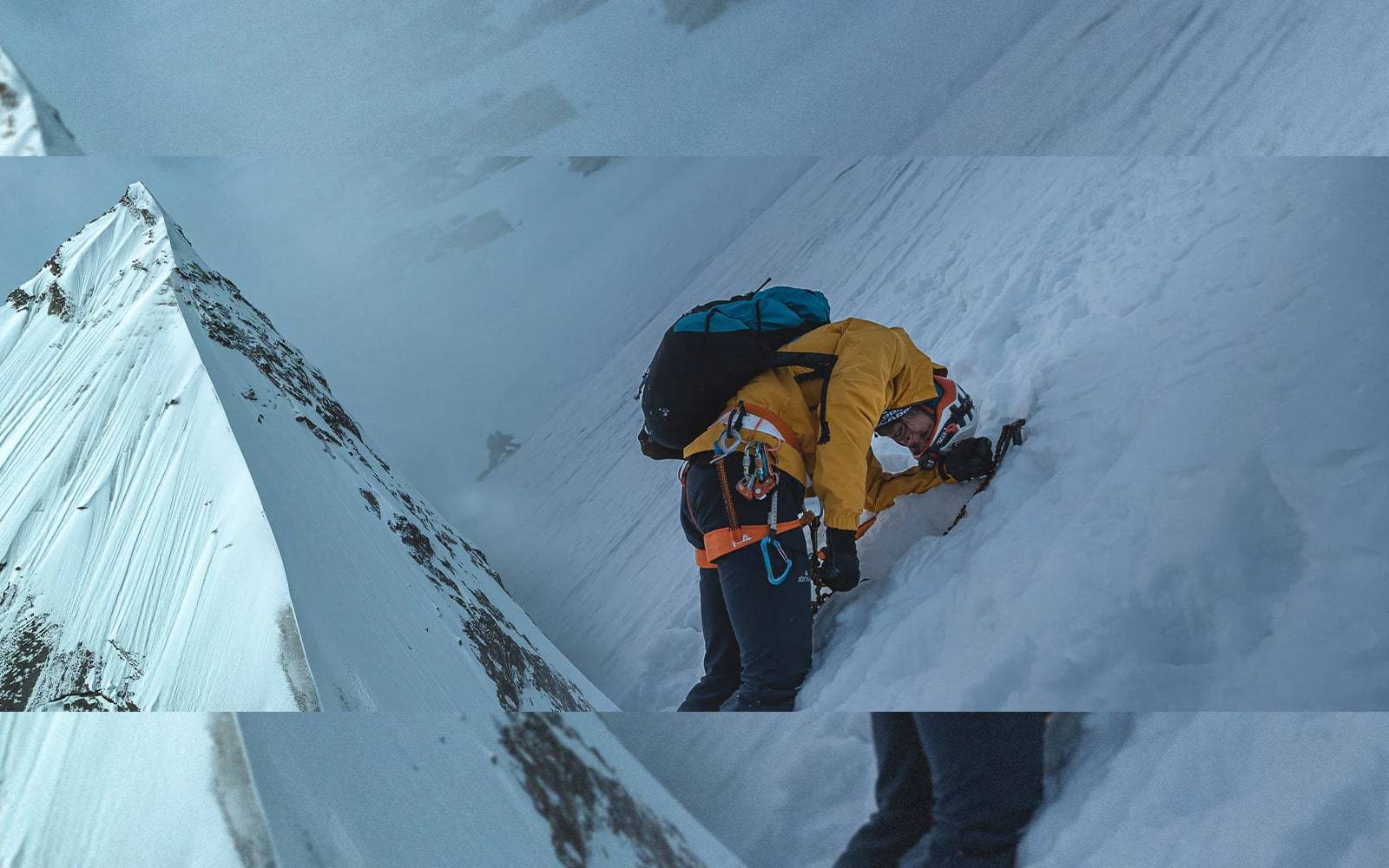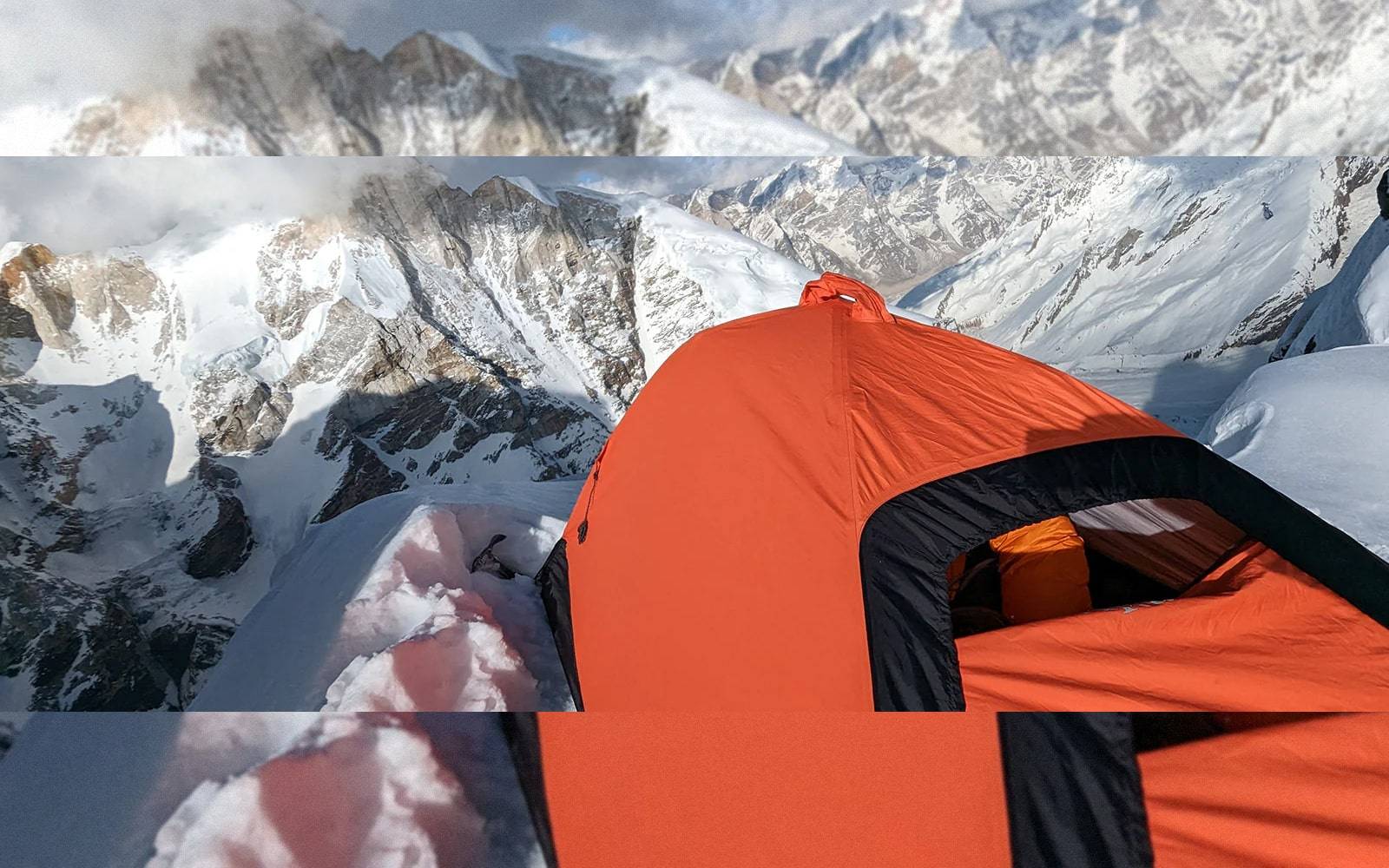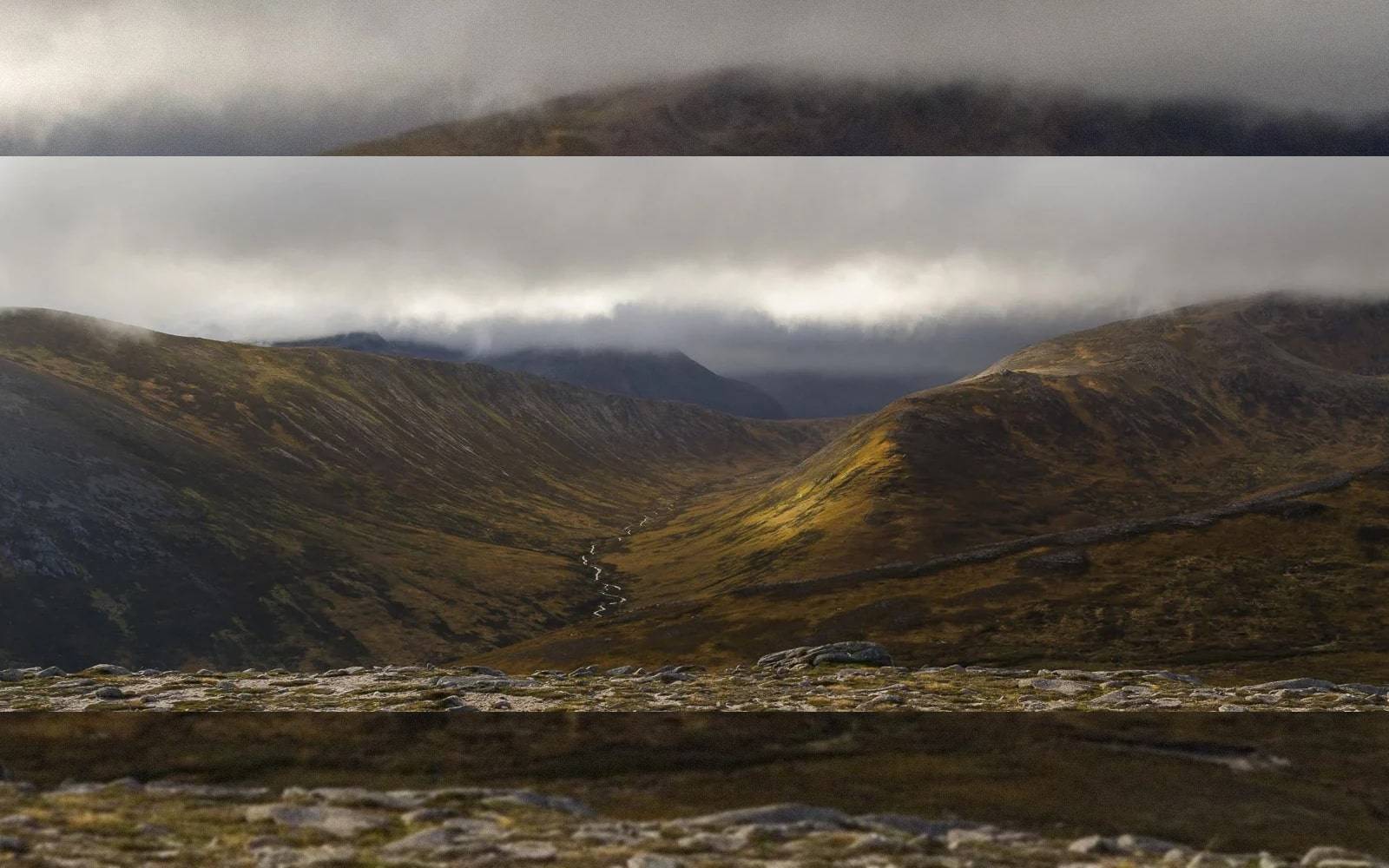
Tim Howell of the Jöttnar Pro Team to attempt highest ever wingsuit BASE jump from Lhotse at 8,100m.
**FOR DETAILED WORLD RECORD ATTEMPT BACKGROUND + LATEST UPDATES: CLICK HERE**
Tim Howell, the British alpinist and BASE jumper, is attempting to set a new world record for the highest wingsuit BASE jump. At approximately 8,100 metres, his proposed exit point on the Lhotse ridge will exceed the current record of 7,700 metres set by Russian wingsuiter Valerei Rozov on Cho Oyo.
Lhotse sits adjacent to Mount Everest and is the world’s fourth-highest mountain. Once jumped, there will be no higher place on earth to launch from as any exit point requires a particular geometry to allow a wingsuit to pressurise and gain forward momentum. Based on his helicopter reconnaissance flight of the mountain last year, he believes the vertical drop at the top of Lhotse’s huge south face will allow this.
With an approximate 4,000 metre height differential between exit and likely landing point, as well as up to 11 kilometres of horizontal distance, it has the potential to be the world’s longest wingsuit BASE jump as well.
Who is Tim Howell?
Tim is a former Royal Marine commando turned full-time climber, alpinist and wingsuit BASE jumper. He’s also a member of the Jöttnar Pro Team. In 2022 he made history by becoming the first person to climb and then BASE jump all six of the Alps’ classic north faces, beginning with the notorious Eiger.
He’s climbed throughout the world, from the Arctic Circle to the Himalaya, and has logged over 1,100 jumps. His personal altitude jumping record to date is 6,000 metres, achieved on Aconcagua in South America. In doing so, he opened up the mountain’s first ever wingsuit BASE flight.
How do you calculate risk for a first-ever jump?
The experience of high altitude flight from Aconcagua has been a useful enabler in his preparations for Lhotse. At lower altitudes, a wingsuit will normally take approximately 200 metres of vertical descent to pressurise. On Aconcagua, because the air was thinner, 300 metres of vertical was required. To give a comfortable safety margin for Lhotse, Tim’s calculations are based upon an initial 400-metre vertical drop before pressurisation and forward momentum is gained.
Tim: “The start of the flight where the suit pressurises with air, which creates an aerofoil, and has forward momentum, takes longer… so really, I can give myself a rough estimate. But actually this wall on Lhotse that I'm looking at is so big. It's going to give me a huge margin for error.”
What is a ‘Start Arc’ and how is it used to plan the jump?
Tim: “A Start Arc is a single point and a single number that gives an idea of how well you're starting the initial wingsuit flight. And normally that's around 200 metres. So, 200 metres down and 200 metres forwards. On Aconcagua it was a 300 metres, and potentially at this high altitude at 8,100 metres it could be 400 metres. So 400 metres down I'm going to be 400 metres away from the cliff.
"It's a one-to-one 45-degree slope. So, on that first ledge that comes out of 50 metres, I'm going to be 350 metres away from that ledge. So a huge amount. These margins are massive.”
What speeds will Tim reach when flying?
The thinner air is also likely to enable a faster top speed. On Aconcagua, he achieved 240kph and is expecting similar on Lhotse. At this kind of velocity, he expects to reach his landing site in the village of Chukhung, 11 kilometres to the south-west, in approximately three minutes.
Tim: “Having done some of the other things like opening the first and only wingsuit exit on Aconcagua, and my time spent in Pakistan on a high alitude expedition, I've been growing my experience and improving my fitness. It's definitely perfect timing for me to try and get something like this done.”
Finding the first-ever exit point, by accident…
Lhotse is the fourth-highest mountain in the world, and climbing up to 8,100m is an achievement in itself. So how do you even find the potential exit point on Lhotse, such an inaccessible mountain?
Tim: “I use FATMAP quite a bit for checking out potential exits. So, you can initially go off pictures and I can see from the type of the rock, the colour of the rock, winter pictures, how the snow's sticking to the cliff. I can see whether it's worth looking into more.
"…And then maybe I bring up FATMAP gradient tools, like a heat map of how steep the face is. And then from that, you can kind of get a really rough sort of altitude of the top to bottom of the steep section of the cliff. And then after all of that, you have to go and visit. You have to be there. So I was fortunate enough to have a helicopter flight around Lhotse in November. And actually the initial cliff that we were looking at that I thought would be guaranteed to have a jump on it wasn't. It was a slab, so not possible to jump from. But in doing this flight, I saw this pillar on the ridge line, and that was the one that for sure, there's a jump there.
“…It's this process of, you know, lots of Googling and lots of looking at maps and topographic pictures and contour lines and figuring out if it's possible or not.”
Managing weather and acclimatisation
Weather and acclimatisation both play a critical role, and so Tim has built in as much time as possible to allow both of these to optimise and converge. He intends to reach Lhotse’s summit via Mount Everest’s Camp 4, before descending its eastern ridge approximately 500 metres to his exit point.
Tim: “The summit from Camp 4 is probably only about a 4-hour climb. But from the summit we've got unknown territory… the majority of which I don't think anyone's ever stood foot on. Nobody's ever needed to get onto this point where I need to exit from.
“We've given ourselves enough margin for weather windows, the acclimatisation, as well as the unknown. We don't know how long it's going to take to get to this exit point so we've got until the end of May. So six weeks really, and hopefully somewhere along that line we can we can get the job done.”
With a benign wind state required for a successful flight, he accepts that multiple trips to the ridge might be required before finding sufficiently calm jumping conditions. He plans to use supplementary oxygen as well as three climbing Sherpas plus British Himalayan guide, Jon Gupta. Accompanying Tim also is his wife and fellow wingsuiter, Ewa Kalisiewicz, who intends to support him all the way to Base Camp.
Tim: “I've got a really good team that I found with John Gupta, who will be leading the climbing segment on that ridge. He's got a lot of high altitude experience.”
As part of the slow trek from Lukla to Base Camp, he made an acclimatisation detour to Island Peak at 6,165 metres over the weekend of 20-21 April.
What does it feel like to fly for such a long time?
Tim: "With a flight time of 3-4 minutes expected when jumping off Lhotse's ridge, you start to feel the strain on your body as you’re holding yourself in a state of stress and focusing heavily on maintaining your correct line.
“So the longest flight in the world at the moment is actually from the Jungfrau. And I've jumped from it twice. And by the end of the flight, you're starting to fatigue for sure. You're in a stress position, putting tension on the suit, for multiple minutes. So, you feel it by the end. Nothing serious, but you definitely feel it by the end.”
Where does your enjoyment come from?
Tim: “People always comment on the photos of my face during the flight. And they say, ‘Oh, you're looking so serious. You're not enjoying it? If you're not enjoying it, why are you doing it...?''
"...But I think the enjoyment comes from the whole package. The flight is incredible. But at that time, I'm just focusing. The enjoyment comes from planning it, from landing, that's when my emotions really come out. And when I've landed, I've realised I've done it. But during the flight, it's just constant attention."
Where to watch and access Tim's live tracker?
You can keep track and follow Tim Howell's world-record attempt to wingsuit BASE jump off Lhotse through his and Jöttnar's social channels. You can also track his progress live through his Garmin device:
Instagram:
- Tim Howell: @tim_howell_adventure
- Jöttnar: @jottnar
Live Garmin Tracker:
- https://share.garmin.com/HHMG6







